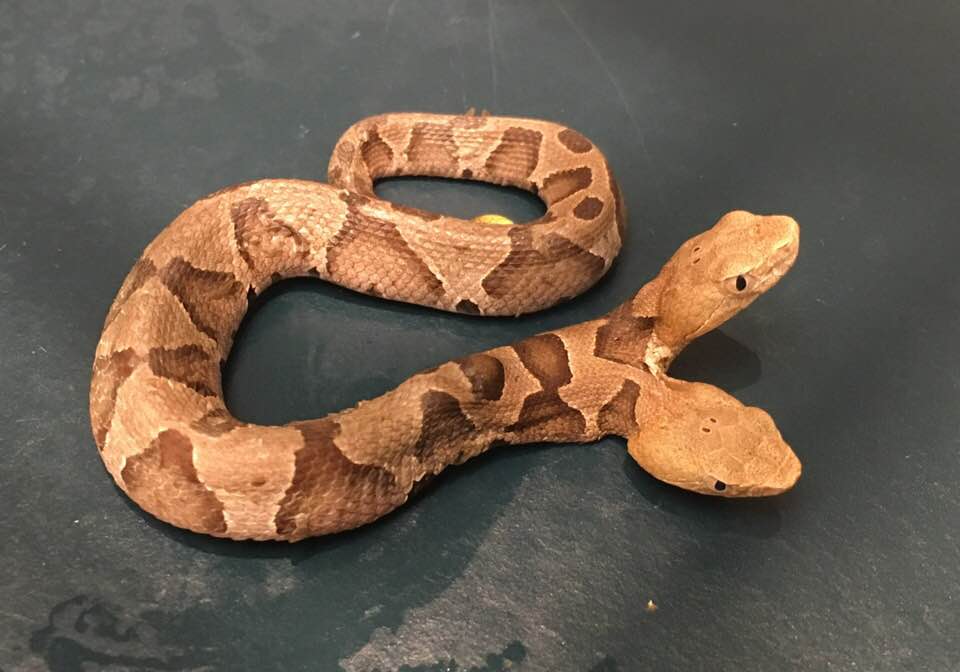Two-Headed Viper Could End Up in Virginia Zoo — If It Stops Fighting with Itself

It's said that each of us is his or her own worst enemy. That's especially true when you're a hungry, venomous snake with two heads.
One such snake — a baby, two-headed copperhead — was recently discovered slithering around a family's yard in northern Virginia. According to a statement from the Wildlife Center of Virginia, where herpetologists performed a medical screening on the snake several days ago, the rare conjoined serpent has two brains, two tracheas and two esophagi leading to a single, shared heart and set of lungs. Both heads are capable of catching and swallowing prey — and that's where the trouble starts.
"Based on the anatomy, it would be better for the right head to eat," Wildlife Center staff wrote in the statement, adding that the right head appeared to have a more developed esophagus. "But it may be a challenge, since the left head appears more dominant." [The 10 Weirdest Medical Cases in the Animal Kingdom]
Imagine arguing with a second, independent brain every time your body wanted to grab a snack, take a nap or even decide which direction to move. According to J.D. Kleopfer, a herpetologist with the Virginia Department of Game and Inland Fisheries, the constant struggle to make basic decisions like these leaves two-headed or "bicephalic" animals vulnerable in the wild.
Two-headed serpents are known to fight themselves over who gets to swallow prey, and these animals can have trouble coordinating their movements when responding to danger. Most die young, Kleopfer wrote on Facebook; to find a live specimen in the wild is a rare occurrence, and to keep a specimen like this one alive will require a lot of care and luck.
For now, the two-headed copperhead is being cared for by a private herpetologist who has "lots of experience in breeding and rearing vipers," Kleopfer wrote. (Copperheads belong to the Viperidae family — and, yes, they are venomous.)
If the newfound snake can be kept alive long enough, it will likely be donated to a zoo or other educational facility for display, the Wildlife Center wrote. That's not stopping some motivated buyers from trying to slither into the center's good graces, however. As of today (Sept. 24), at least six people, including the owner of a private museum, have offered to buy the rare snake from the state, The Washington Post reported.
Get the world’s most fascinating discoveries delivered straight to your inbox.
While living examples of bicephalic animals are exceptionally rare, two-headed creatures are born more often than you might think. A two-headed deer was found dead in the Minnesota backwoods earlier this year, and a two-headed porpoise was hauled up from the North Sea in 2017. Last year, a flatworm — a species in which a single worm can regrow into complete individuals after being cut into pieces — grew a second head on its butt while riding aboard the International Space Station.
Originally published on Live Science.

Brandon is the space / physics editor at Live Science. With more than 20 years of editorial experience, his writing has appeared in The Washington Post, Reader's Digest, CBS.com, the Richard Dawkins Foundation website and other outlets. He holds a bachelor's degree in creative writing from the University of Arizona, with minors in journalism and media arts. His interests include black holes, asteroids and comets, and the search for extraterrestrial life.



